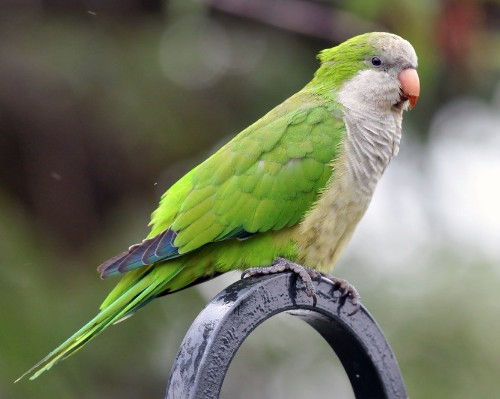
This last week was interesting, because I got to go on my first Bird Watching tour. If you recall my paragraph about the Christmas Bird Count from a few weeks ago, you’ll remember that I mentioned I would be going on one of these censuses, trying to track the population shift of the Monk Parakeet which has historically used Hyde Park (the neighborhood I live in) as a primary breeding ground. I met with my ecology class at the edge of campus, we all suited-up and received some high-powered bird-watching binoculars, and set-out West, through Washington Park, looking for these Parakeets and their distinctive-looking nests.
Two hours later, we had seen exactly 1 American Robin, 4 Seagulls, 150 Crows, and approx. 768 Canadian Geese. 0 parakeets, however. As it turns out, Bird Watching on the south-side of Chicago in the middle of Winter is really quite boring. The highlight of the trek—the American Robin sighting—happened about 2 minutes after we set-out, and the rest was downhill from there. I have gained much more respect for the amateur Bird Watchers and Scientists who dutifully go out each year to collect the this very important data, but I don’t think I’ll ever be joining them again. I realized this after marking down the 342nd Canadian Goose sighting on my data sheet, and wondering if this were the same goose I had counted 150 Geese ago.
After the walk, however, we were responsible for learning a bit more about the Monk Parakeets and why they were no longer breeding in Hyde Park. The Pruett-Jones et. al. paper titled „Urban parakeets in Northern Illinois: A 40-year perspective“ explains the phenomena as such:
- „[T]he decline in Hyde Park is the result of shifts in population structure from a few dense aggregations to progressively more spatially separated smaller groups. As evidence for this, the population of parakeets in the greater Chicago region does not appear to have declined but is still growing in size and distribution. Monk parakeets are a novel addition to many urban ecosystems, with a neutral impact to most other bird species but an increasingly complex interaction with human residents in urban areas.“
It turns-out that the Monk Parakeets have just moved-out of Hyde Park, where they had initially settled, after being accidentally introduced to the Northern Illinois ecosystem, likely through some transportation accident. Some Monk Parakeet nests are destroyed by maintenance companies however, as their preferred nesting substrates include telephone poles, where they increase risk of fires and service-outages.
As one more interesting fact about Monk Parakeets, I will include that their populations seem to be growing the most in New York, where they are seen as useful buy preservation societies. The parakeets fill the same ecological niches as Pigeons, whose feces are acidic and harmful to historical buildings. The feces of the parakeets, however, has no effect on these buildings, and thus the parakeets are welcome neighbors to some historical houses in New York.